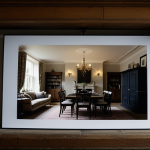Step-by-step process for creating a traditional British roast dinner
Preparing a traditional British roast dinner begins with understanding its core elements: roast meat (such as beef, chicken, lamb, or pork), crispy roast potatoes, a selection of seasonal vegetables, Yorkshire pudding, and rich gravy. Knowing how to make roast dinner effectively involves precise timing and coordination to ensure everything is cooked to perfection and served piping hot.
Start by seasoning and roasting your chosen meat, allowing enough time to rest afterward so the juices redistribute. While the meat roasts, prepare your potatoes; parboil them briefly before roasting with fat for that sought-after crispy exterior. Simultaneously, cook your vegetables—carrots, parsnips, and green beans are popular choices. Yorkshire pudding batter can be prepared ahead and baked toward the end, ensuring a light, airy texture.
Also to discover : What are the steps to making a delicious Lancashire hotpot?
Managing the timing is crucial. For instance, roast meat and potatoes are best when served immediately, while vegetables and Yorkshire puddings should be ready just as the meat rests. This roast dinner step-by-step approach helps maintain the traditional balance of flavors and textures that make this meal beloved across the UK. Understanding each component’s cooking times makes the entire process seamless and enjoyable.
Step-by-step process for creating a traditional British roast dinner
Creating a traditional British roast dinner involves several key elements that combine to make this iconic meal both satisfying and memorable. Central to the dinner is the roast meat, commonly beef, chicken, lamb, or pork, which requires proper seasoning and roasting to bring out rich flavors.
Also to read : What are the secrets to making a hearty Lancashire hotpot?
Alongside the meat, roast potatoes are essential, crispy on the outside and fluffy inside, achieved through careful parboiling, roughening, and roasting in hot fat. Seasonal vegetables such as carrots, parsnips, and Brussels sprouts add colour and nutrition. Yorkshire pudding is a classic addition, made from a simple batter of eggs, flour, and milk, baked until puffed and golden.
The final touch is gravy, made by deglazing the roasting pan with stock or wine, thickened to the right consistency, and poured generously over the meat and potatoes.
Timing is crucial: start by roasting the meat first; while it rests, roast the potatoes and prepare the Yorkshire pudding batter. Vegetables should be cooked last to serve everything hot and fresh. This coordination ensures that each roast dinner component is cooked perfectly, creating the classic British feast everyone loves.
Essential ingredients and preparation guide
Understanding the British roast dinner ingredients is key to mastering how to make roast dinner. The core components include choice roast meat—beef, chicken, lamb, or pork—roast potatoes, seasonal vegetables like carrots and parsnips, Yorkshire pudding, and rich gravy. Selecting the right meat depends on personal preference and cooking method; for example, beef requires longer roasting times for medium to rare doneness, while chicken roasts quicker but benefits from stuffing or seasoning for flavour.
When preparing roast dinner, begin by preheating your oven and thoroughly seasoning the meat. Parboiling potatoes before roasting ensures a crisp outer texture. Vegetables should be peeled and cut uniformly to cook evenly. Yorkshire pudding batter is simple to prepare ahead; it requires just flour, eggs, and milk, allowing it to rest for better rising during baking.
A comprehensive shopping list for roast dinner includes the main meat, potatoes, mixed vegetables, flour, eggs, milk, and ingredients for gravy such as stock or drippings. Preparing all ingredients in advance avoids last-minute stress, making the cooking process smoother and more enjoyable. Coordinating these preparation steps carefully will set the stage for perfectly timed roasting and assembling of your traditional British roast dinner.
Step-by-step process for creating a traditional British roast dinner
A traditional British roast dinner centers on roasting meat, preparing crisp potatoes, cooking fresh vegetables, baking Yorkshire puddings, and making rich gravy. Mastering how to make roast dinner successfully relies on juggling these components with precise timing.
First, start by seasoning your chosen roast meat—beef, lamb, chicken, or pork—and placing it in the oven. While the meat roasts, parboil potatoes to soften them; then roughen their surfaces slightly before roasting with fat to ensure they become delightfully crispy on the outside. Next, prepare seasonal vegetables such as carrots, parsnips, and Brussels sprouts, timing their cooking so they remain vibrant and tender.
Creating the Yorkshire pudding batter early in the process allows it to rest before baking. This batter, made from eggs, flour, and milk, should be poured into hot fat and baked toward the end, ensuring a light, puffed texture. After the meat is cooked and allowed to rest, use the pan juices to make gravy by deglazing and thickening as needed.
This roast dinner step-by-step approach emphasizes coordinating cooking times so that every element—from roast meat to Yorkshire puddings—is ready simultaneously, served hot and delicious to uphold the meal’s traditional harmony and flavour.
Step-by-step process for creating a traditional British roast dinner
Creating a traditional British roast dinner involves combining several key components harmoniously. The main elements include roast meat, crispy roast potatoes, a variety of seasonal vegetables, Yorkshire pudding, and rich gravy. Understanding how to make roast dinner well means mastering both cooking techniques and timing.
Begin with roasting your chosen meat—beef, chicken, lamb, or pork—seasoned appropriately. While the meat cooks, prepare the potatoes by parboiling, then roughening their surface before roasting in hot fat to achieve a crisp texture. Simultaneously, trim and boil or steam the vegetables like carrots, parsnips, and green beans so they retain colour and bite.
Yorkshire pudding batter, made from flour, eggs, and milk, should be rested before baking in a hot oven for optimal rising and puffiness. Coordinating roasting times is vital: roast meat first, letting it rest so juices redistribute, then roast potatoes and bake Yorkshire puddings while vegetables finish cooking. The roast dinner step-by-step process ensures each element is ready to serve piping hot.
This timing is essential for a well-balanced meal where textures and flavours complement each other, making the traditional British roast dinner a satisfying feast.
Step-by-step process for creating a traditional British roast dinner
A traditional British roast dinner features several key components: roast meat, crispy roast potatoes, seasonal vegetables, Yorkshire pudding, and rich gravy. Knowing how to make roast dinner involves balancing these elements so they complement each other perfectly.
Begin by seasoning and roasting your chosen meat—beef, chicken, lamb, or pork—aiming for the ideal doneness. While the meat cooks, prepare your potatoes by parboiling and roughening them, then roasting with fat to achieve crispiness. Simultaneously, cook your vegetables—carrots, parsnips, and Brussels sprouts commonly complement the meal.
Yorkshire pudding batter, prepared from eggs, flour, and milk, should rest before baking in hot fat late in the process to ensure it rises light and airy. Gravy is made by deglazing the meat’s roasting pan and thickening the juices.
Timing is vital: start with the meat, which requires the longest cooking and resting time. Potatoes roast while the meat rests, and vegetables cook last to stay vibrant. Yorkshire pudding bakes near serving time. This roast dinner step-by-step approach ensures every element is ready together, piping hot and bursting with flavour, creating the harmonious meal at the heart of British tradition.
Step-by-step process for creating a traditional British roast dinner
A traditional British roast dinner consists of several key components: roast meat, crispy roast potatoes, seasonal vegetables, Yorkshire pudding, and rich gravy. Each element requires specific preparation to achieve the distinctive textures and flavours expected in this classic meal.
Start by roasting your chosen meat—beef, chicken, lamb, or pork—seasoned and cooked to the desired doneness. While the meat roasts, parboil potatoes, then roughen their surfaces to promote a crispy exterior when roasted in hot fat. Vegetables like carrots, parsnips, and Brussels sprouts should be prepared to retain colour and tenderness, cooked by boiling or steaming to finish alongside the meat resting period.
Yorkshire pudding batter, made from eggs, flour, and milk, benefits from resting before baking in a hot oven with preheated fat, which ensures they rise properly and crisp up. Timing and coordination are critical: roast meat first, allow it to rest to redistribute juices, then roast potatoes and bake Yorkshire puddings, while vegetables cook last to serve everything hot.
Following this roast dinner step-by-step method keeps all components ready simultaneously, preserving texture, flavour, and warmth, demonstrating precisely how to make roast dinner with traditional balance and harmony.
Step-by-step process for creating a traditional British roast dinner
Mastering how to make roast dinner begins with understanding its five essential elements: roast meat, crispy roast potatoes, seasonal vegetables, Yorkshire pudding, and gravy. A traditional British roast dinner relies on balancing these components in both flavour and timing.
Start by seasoning and roasting the chosen meat (beef, lamb, chicken, or pork), as it takes the longest to cook and requires resting to redistribute juices. While the meat roasts, parboil and roughen potatoes before roasting them with hot fat for a crispy exterior. Prepare vegetables such as carrots, parsnips, or Brussels sprouts by boiling or steaming, ensuring they retain vibrant colour and texture.
Yorkshire pudding batter, made from eggs, flour, and milk, should rest to develop gluten, then baked in a hot tray with fat to puff up light and airy near the meal’s end. Gravy comes last by deglazing the roasting pan with stock or wine, thickened for richness.
Coordinating these steps means starting with the meat, then potatoes roasting while the meat rests, vegetables cooking last, and finally baking Yorkshire puddings just before serving. This roast dinner step-by-step method ensures all elements finish hot and harmoniously, delivering the classic British roast meal experience.
Step-by-step process for creating a traditional British roast dinner
A traditional British roast dinner features five main components: roast meat, crispy roast potatoes, seasonal vegetables, Yorkshire pudding, and rich gravy. Understanding how to make roast dinner requires careful timing, ensuring each element is cooked perfectly and served hot.
Start by seasoning your chosen roast meat—beef, chicken, lamb, or pork—and roasting it to the preferred doneness. The meat usually takes the longest, so it must begin first. While the meat roasts, parboil the potatoes, then roughen their skins before roasting them with hot fat to achieve the signature crispiness. Vegetables like carrots, parsnips, or Brussels sprouts should be prepared to maintain their colour and texture, typically boiled or steamed to finish just before serving.
Yorkshire pudding batter—made from eggs, flour, and milk—should rest before being poured into hot fat in the oven late in the process, ensuring a light, puffed result. Once the meat has rested, use the pan juices to make gravy by deglazing and thickening appropriately.
Following this roast dinner step-by-step coordination guarantees each component is ready simultaneously, preserving the traditional flavours and textures that define this classic British feast.






